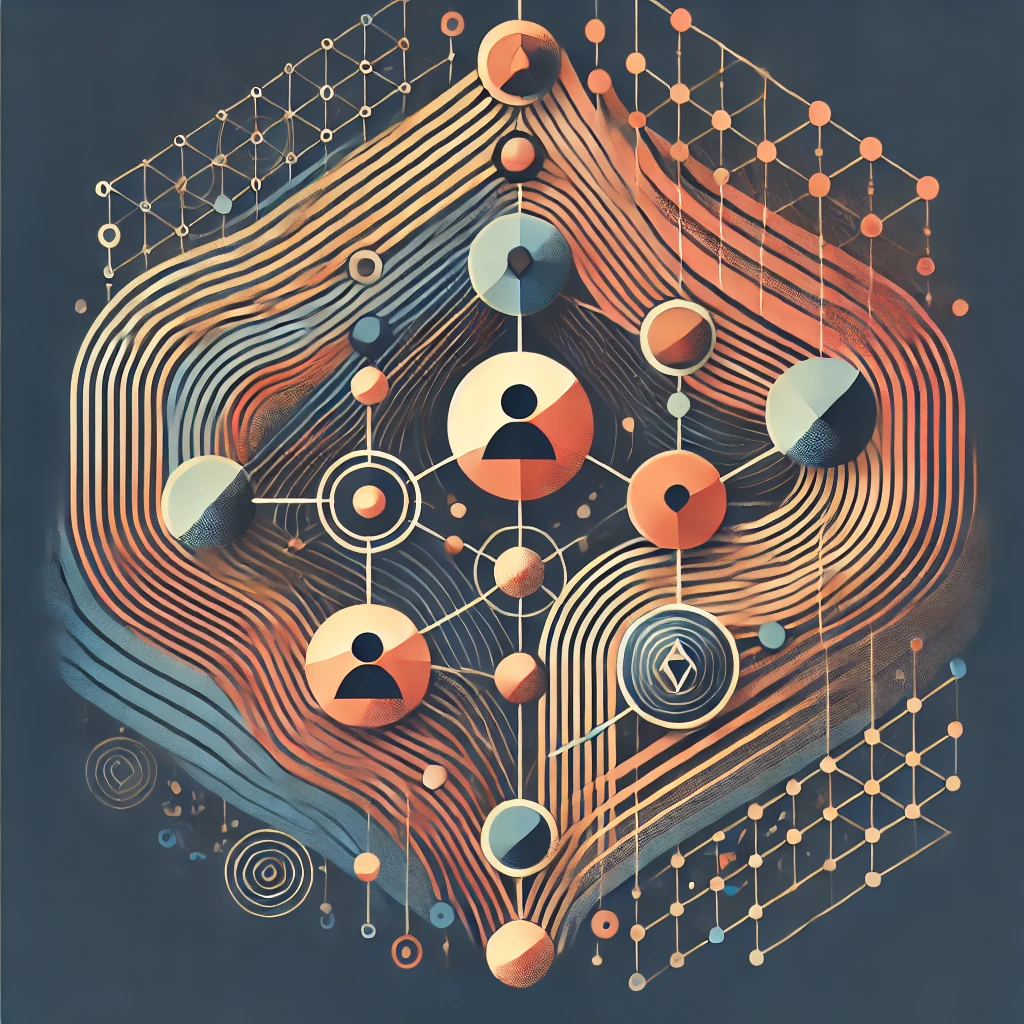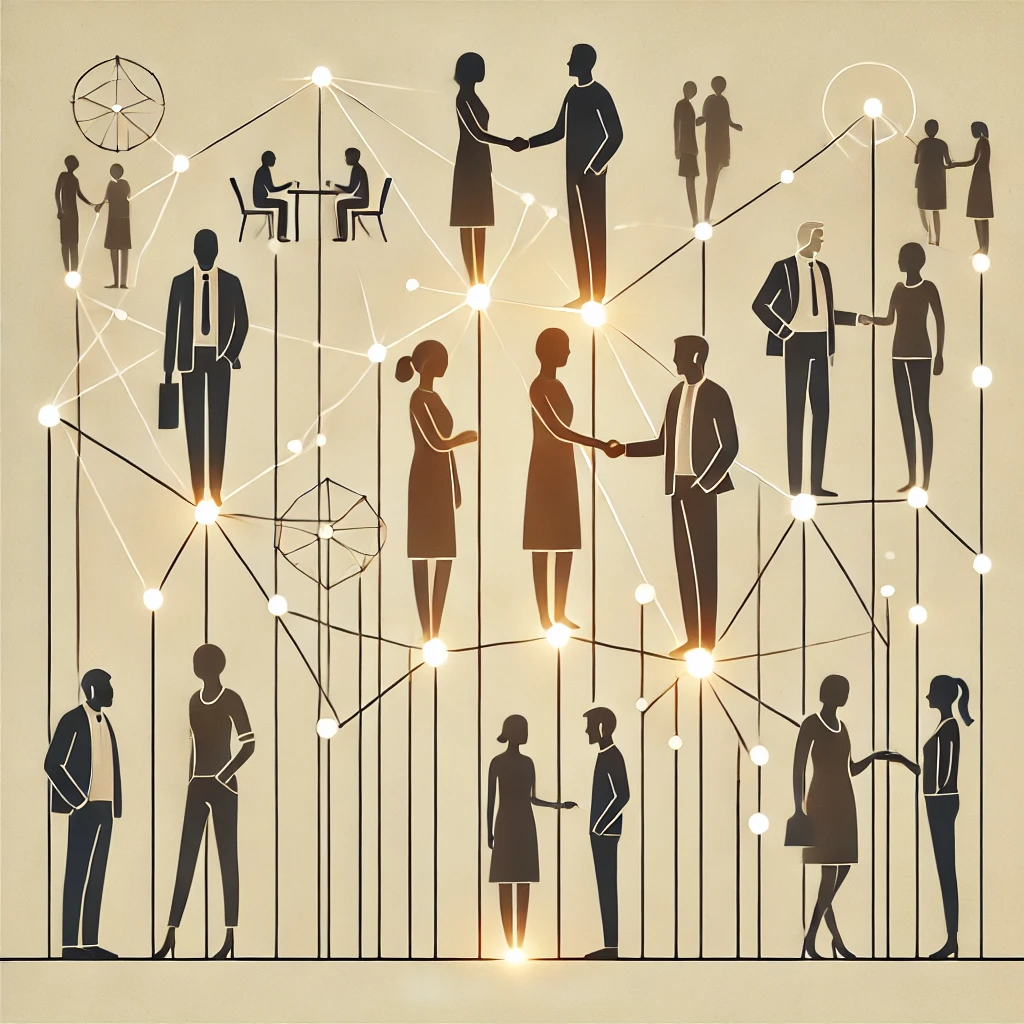
ChatGPT:
Expanded Summary of “What Is Social Capital? A Comprehensive Review of the Concept.
This in-depth review article by Humnath Bhandari and Kumi Yasunobu (published in the Asian Journal of Social Science in 2009) explores the definition, origins, types, measurement, impact, and debates surrounding social capital. The authors argue that while social capital has gained prominence in economic and social policy discussions, it remains a complex and debated concept with measurement challenges and theoretical ambiguities.
Introduction: The Growing Importance of Social Capital
Social capital, though an old concept, became central to economic and social development discourse in the 1990s. It provides an alternative explanation for why some societies or economies perform better than others, even when they have similar access to resources, technology, and markets. Traditional economic models, such as the Solow growth model and Walrasian equilibrium model, have struggled to explain the persistent disparities in economic development.
Economists have traditionally focused on physical capital, human capital, and financial capital, while largely ignoring social and cultural factors. However, increasing evidence suggests that social values, institutions, trust, and networks play a crucial role in shaping economic performance and development. This realization has propelled social capital into mainstream academic and policy discussions.
Defining Social Capital: Multiple Perspectives
Despite its growing importance, there is no universally accepted definition of social capital. Scholars and institutions define it differently, leading to ambiguities and inconsistencies.
Major Definitions of Social Capital
1 Pierre Bourdieu (1986): Defines social capital as the resources derived from social networks and group membership, emphasizing class-based access to social benefits.
2.James Coleman (1988): Views social capital as an asset that facilitates collective action, highlighting trust, norms, and relationships as essential for social and economic benefits.
3.Robert Putnam (1993, 2000): Popularized the concept by associating it with civic engagement, social trust, and networks that enhance government efficiency and economic performance.
4.Francis Fukuyama (1995): Defines social capital as the ability of people to work together based on shared trust and norms, arguing that high-trust societies outperform low-trust ones.
5.OECD (2001): Defines social capital as networks, shared norms, and values that facilitate cooperation.
6.The World Bank (2007): Takes a broad view, stating that social capital is the glue that holds societies together through institutions, relationships, and norms.
Common Elements of Social Capital
Despite diverse definitions, most scholars agree that social capital consists of:
Social networks (connections among people, communities, and institutions).
Trust (confidence in institutions and individuals).
Norms of reciprocity (shared expectations of mutual assistance).
Civic engagement (participation in social, political, and economic activities).
Types of Social Capital
Structural vs. Cognitive Social Capital
Structural social capital: Involves observable networks, institutions, and formal relationships (e.g., memberships in organizations, social groups, or business associations).
Cognitive social capital: Involves shared values, trust, and social norms that drive cooperation (e.g., cultural beliefs, civic engagement).
Bonding, Bridging, and Linking Social Capital
Bonding social capital: Ties among close-knit groups (e.g., family, ethnic groups, religious communities).
Bridging social capital: Connections between different social groups, fostering diversity and inclusion.
Linking social capital: Relationships between individuals and institutions, enabling access to power and resources.
Strong vs. Weak Ties
Strong ties: Close, emotionally deep connections (family, close friends).
Weak ties: Looser connections that provide access to diverse resources (acquaintances, professional networks).
Horizontal vs. Vertical Social Capital
Horizontal social capital: Relationships between equal-status individuals (e.g., neighborhood associations).
Vertical social capital: Relationships between people with different levels of power and influence (e.g., employer-employee, citizen-government).
Challenges in Measuring Social Capital
Measuring social capital is complex and controversial due to its intangible nature. Some approaches include:
Survey-based indicators: Measuring trust, civic participation, and social engagement.
Network analysis: Studying connections between individuals and groups.
Institutional trust levels: Assessing citizen confidence in governance and institutions.
Economic impact studies: Analyzing how social capital affects productivity, economic growth, and inequality.
Despite these methods, no standardized framework exists, making comparisons difficult.
Economic and Social Impact of Social Capital
Benefits of Social Capital
Economic Growth: Enhances productivity, trust in markets, and efficiency in transactions.
Better Governance: Strengthens democracy, policy implementation, and institutional efficiency.
Lower Crime Rates: High social capital societies experience lower corruption and crime.
Improved Health & Education: Leads to better public health and schooling outcomes.
Stronger Community Cohesion: Reduces conflict and enhances social stability.
Criticism & Challenges
Exclusionary Effects: Can reinforce group discrimination and inequality (e.g., elite networks controlling opportunities).
Difficult to Measure: No standardized indicators make empirical research challenging.
Capital Debate: Some economists argue social capital is not truly capital, since it cannot be easily quantified, owned, or traded.
Debate: Is Social Capital Really Capital?
A key controversy is whether social capital qualifies as in the same sense as physical or financial capital.
Arguments in Favor:
Can be accumulated over time.
Provides economic and social returns.
Enhances productivity and reduces transaction costs.
Arguments Against:
Unlike traditional capital, it cannot be bought or sold.
Measurement is inconsistent.
Not always universally beneficial (e.g., mafia networks, political corruption).
Despite this debate, social capital is widely accepted as a key driver of economic and social progress.
Policy Implications: How to Strengthen Social Capital?
Governments and institutions can promote social capital by:
Encouraging civic participation and volunteering.
Investing in education and trust-building initiatives.
Strengthening transparent governance and anti-corruption measures.
Promoting inclusive policies to prevent exclusionary effects.
Conclusion: The Future of Social Capital Research
Social capital is a powerful concept that explains how social networks, trust, and cooperation shape economic and social development. However, ambiguities in its definition, measurement, and effects remain major challenges. More empirical research, standardization, and policy focus are needed to maximize its potential benefits.
Frequently Asked Questions (FAQs) on Social Capital
1. What is social capital?
Social capital refers to the networks, trust, norms, and relationships among individuals and institutions that facilitate cooperation and collective action for mutual benefit.
2. Why is social capital important?
Social capital enhances economic growth, improves governance, strengthens social cohesion, increases civic engagement, and reduces transaction costs in social and economic interactions.
3. What are the main types of social capital?
The three main types are:
Bonding Social Capital: Strengthens ties within a close-knit group (e.g., families, close communities).
Bridging Social Capital: Connects diverse groups to exchange information and resources.
Linking Social Capital: Establishes relationships between individuals and institutions with power or resources.
4. How does social capital impact economic development?
It fosters trust in markets, reduces transaction costs, encourages entrepreneurship, facilitates job access, and improves institutional efficiency, leading to sustainable economic growth.
5. What is the difference between structural and cognitive social capital?
Structural Social Capital: Involves tangible networks and institutions (e.g., clubs, organizations).
Cognitive Social Capital: Relates to intangible aspects like trust, norms, and shared values.
6. How can social capital be measured?
Social capital is often measured through:
Surveys assessing trust, civic engagement, and participation in networks.
Institutional trust levels (confidence in governance).
Network analysis (mapping relationships between individuals and groups).
7. What are the criticisms of social capital?
Difficult to measure due to its intangible nature.
Can reinforce inequalities if access to networks is limited to privileged groups.
Not universally beneficial (e.g., exclusive elite networks, criminal organizations).
Debate over whether it qualifies, since it cannot be easily owned or traded.
8. How does social capital affect governance?
It promotes transparency, reduces corruption, increases government responsiveness, and strengthens democratic institutions by fostering civic engagement and trust in public policies.
9. Can social capital have negative effects?
Yes, when exclusive groups use social capital to maintain power, discrimination, or corruption. Examples include political cronyism, nepotism, and closed social networks that exclude outsiders.
10. What role does social capital play in education?
It improves student outcomes by fostering parental involvement, teacher-student relationships, and community support, leading to better academic performance and lower dropout rates.
11. How does social capital influence health?
Stronger social networks and trust reduce mental stress, increase access to healthcare information, and promote healthier lifestyles, improving overall well-being.
12. Is social capital more relevant in developing or developed countries?
Social capital is crucial in both contexts:
Developed countries: Enhances governance, innovation, and social well-being.
Developing countries: Fosters community resilience, informal economies, and social trust in the absence of strong institutions.
13. How can governments and institutions strengthen social capital?
Governments can:
Promote civic engagement and volunteerism.
Strengthen anti-corruption policies.
Improve education and trust-building initiatives.
Encourage inclusive policies to prevent discrimination and exclusion.
14. What is the debate in social capital?
Some economists argue that social capital lacks key properties of traditional capital (e.g., it cannot be traded or owned), while others believe it functions like capital by generating long-term social and economic returns.
15. How does social capital relate to human capital?
Social capital complements human capital by enhancing knowledge exchange, improving job opportunities, and fostering collaboration, leading to greater productivity and economic success.
16. What are some real-world examples of social capital in action?
Neighborhood watch programs (community trust and safety).
Microfinance groups (trust-based lending).
Online professional networks like LinkedIn (bridging social capital).
Grassroots movements advocating for policy changes.
17. Can digital platforms build social capital?
Yes, social media and online communities create new forms of social capital by connecting people across geographical and cultural boundaries, though they also risk fostering misinformation and polarization.
18. How does social capital influence entrepreneurship?
Entrepreneurs with strong social networks and trust-based relationships gain better access to funding, business opportunities, and mentorship, increasing their chances of success.
19. What is the relationship between social capital and democracy?
High levels of social capital strengthen civic engagement, accountability, and trust in democratic institutions, leading to more stable and responsive governments.
20. What future research is needed on social capital?
More empirical studies are required to:
Develop standardized measurement tools.
Analyze its long-term economic and social effects.
Address inequality in access to social capital.

